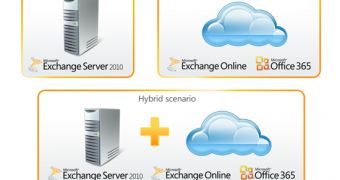How should customers deploy Microsoft Exchange? This is a legitimate question, especially considering the flavors of Exchange available and the deployment scenarios which they make possible. Organizations can leverage Exchange Server installed on their servers, but they can also subscribe to services offered by the Redmond company, running on the software giant’s databases.
At the same time, Microsoft offers customers the possibility to transition smoothly from on-premises deployments to the Cloud, rather than a rip-and-replace move.
The Exchange Deployment Options Whitepaper is now available free of charge via the Microsoft Download Center, and the official label of the resource is bound to be self-explanatory.
“The purpose of this paper is to help you choose how to deploy Microsoft Exchange: as Exchange Server 2010 on-premises, Exchange Online with Microsoft Office 365 in the cloud, or using both in a temporary or permanent hybrid scenario. Knowing the benefits and limitations of each deployment option can help you make the right decision for your organization,” Microsoft explained.
“Whatever you decide, the deployment flexibility that Microsoft provides with Exchange makes it easier for you to get the right solution for your business.”
While some organizations will opt to remain anchored on-premises, and run all their data locally, others already understand that IT is changing.
At the heart of its evolution is the transformation of business models in an effort to adapt to IT as a service.
The Cloud is certainly inevitable, even for those that currently use Exchange Server 2010 or earlier on-premises.
“Growing numbers of organizations are choosing to move email infrastructure to the cloud—that is, consuming email as a hosted service over the Internet rather than deploying, provisioning, managing, securing, and updating email servers in-house,” the company added.
“The benefits of this approach include the following:
• Reduced IT costs
• Increased agility in meeting organizational needs
• Increased availability and reliability
• Having the latest technology without having to migrate or upgrade.”
Exchange Server 2010 SP1 RTM VHD is available for download here. Exchange Server 2010 Service Pack 1 (SP1) RTM is available for download here.

 14 DAY TRIAL //
14 DAY TRIAL //